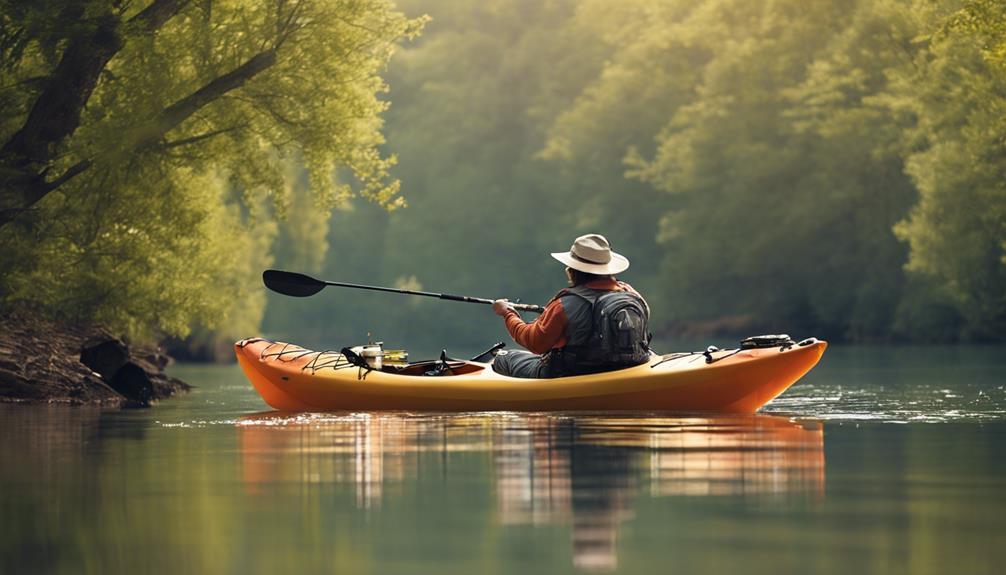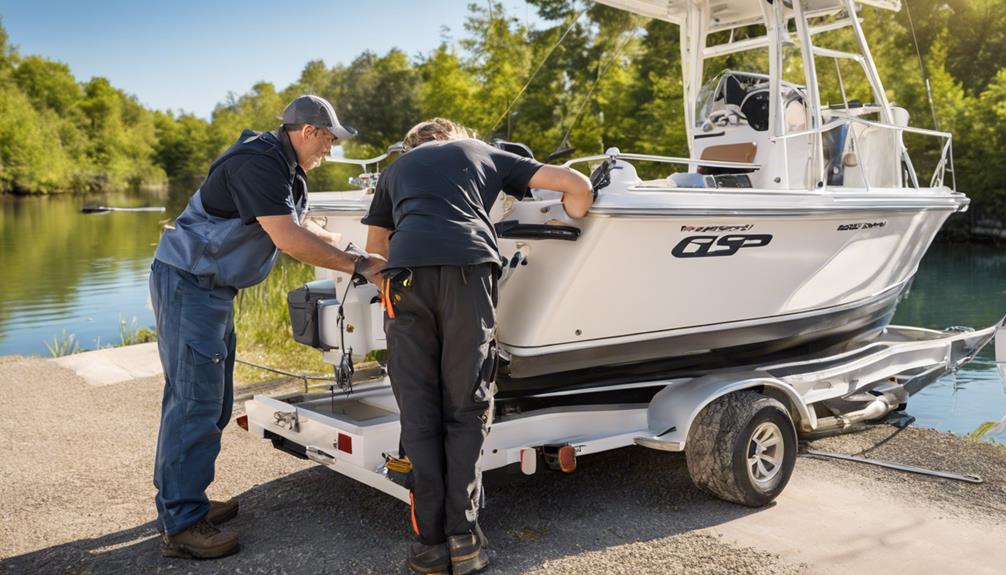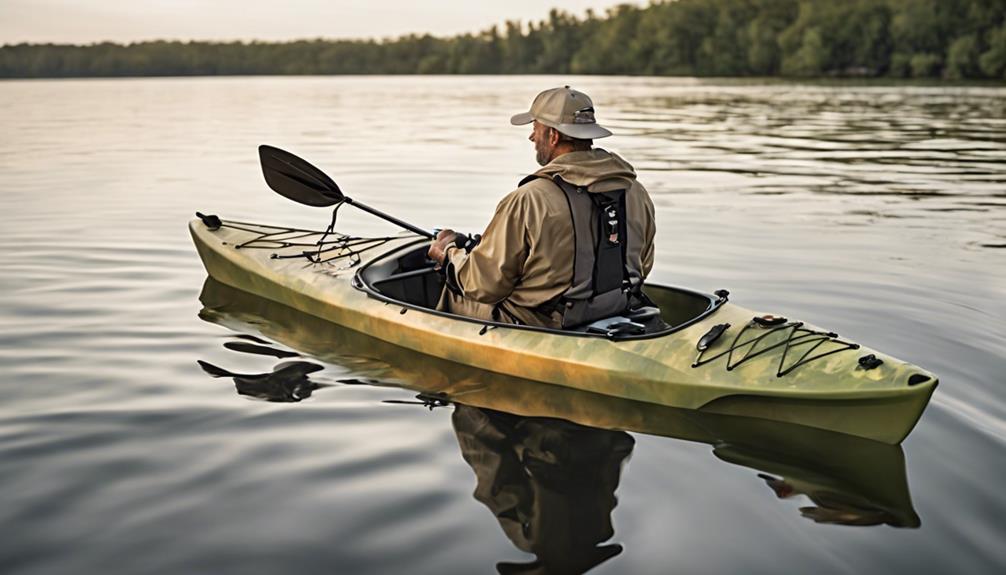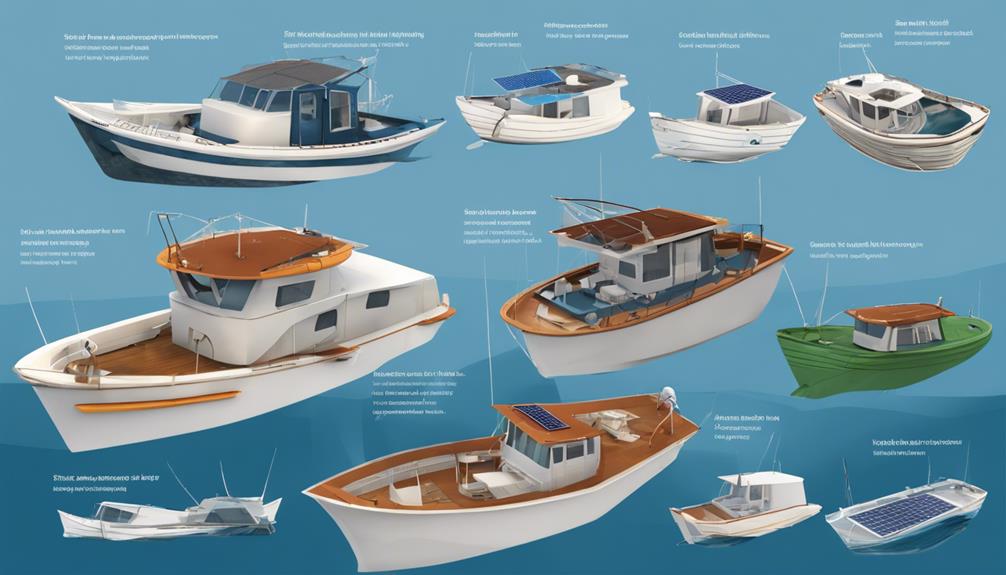When exploring river fishing, you want a kayak that can handle the unique challenges of moving water.
But what makes river-suitable fishing kayaks stand out from the rest?
The answer lies in their specialized features, tailored to enhance your experience on the water.
From stability in varying river conditions to clever design elements that aid in navigation, these kayaks offer a range of benefits that make them the top choice for anglers seeking a reliable and efficient vessel.
Benefits of River-Suitable Fishing Kayaks
When looking for a fishing kayak suitable for rivers, durability and maneuverability are key factors to consider. River-suitable fishing kayaks offer a range of benefits that enhance your overall experience on the water. One significant advantage is the comfort features designed to keep you relaxed during long hours of fishing. These kayaks often come equipped with adjustable padded seats that provide excellent back support, ensuring you can focus on fishing without discomfort. Additionally, some models include adjustable foot braces and ample legroom, allowing you to customize the kayak to your specific needs for a more enjoyable outing.
In terms of performance advantages, river-suitable fishing kayaks are built to handle the unique challenges of river conditions. Their streamlined designs and lightweight construction make them highly maneuverable, allowing you to navigate through tight spots and around obstacles with ease. This increased agility is essential for river fishing, where you may encounter swift currents and narrow passages. Moreover, these kayaks often feature excellent tracking abilities, helping you stay on course even in challenging waters.
The combination of durability, maneuverability, comfort features, and performance advantages make river-suitable fishing kayaks an ideal choice for anglers looking to explore and fish in rivers.
Stability in River Conditions
For navigating rivers successfully in a fishing kayak, ensuring stability in varying water conditions is crucial. When venturing into river fishing, you must prioritize stability to handle the unpredictable nature of river currents. Safety precautions should always be at the forefront of your mind. Before setting out, double-check that your kayak is in good condition, paying special attention to the hull for any signs of damage or wear that could compromise stability. Regular equipment maintenance is key to ensuring your kayak remains stable on the water.
To enhance stability, consider adding outriggers to your fishing kayak. These attachments provide extra support and prevent tipping in rough waters, giving you peace of mind as you navigate the river. Additionally, practicing proper paddling techniques can significantly improve your stability on the water. By maintaining a low center of gravity and distributing your weight evenly, you can better handle the challenges of river fishing.
Remember that stability isn't just about preventing capsizing; it also affects your overall fishing experience. A stable kayak allows you to focus on fishing rather than constantly worrying about maintaining balance. By prioritizing stability and following safety precautions and equipment maintenance routines, you can enjoy a safer and more successful river fishing adventure.
Maneuverability for River Fishing
Ensuring optimal maneuverability in your fishing kayak is essential for navigating the twists and turns of river fishing expeditions. When choosing a kayak for river fishing, you must consider factors that enhance maneuverability, such as paddle techniques and gear organization.
- Paddle Techniques
- Mastering efficient paddle strokes will allow you to navigate through narrow river channels and swiftly change directions to reach your desired fishing spots.
- Gear Organization
- Properly organizing your fishing gear within easy reach will help maintain balance in your kayak and ensure quick access to essential items without disrupting your paddling rhythm.
- Body Positioning
- Learning how to position your body correctly in the kayak can significantly improve maneuverability by shifting your weight to facilitate smooth turns and maneuvers around obstacles.
- Understanding River Currents
- Being familiar with how river currents work and how they affect your kayak's movement will enable you to anticipate challenges and adjust your paddling techniques accordingly to maintain control and maneuver effectively.
Weight and Portability Considerations
Considering the weight and portability of your fishing kayak is crucial for ease of transportation and maneuverability during your river expeditions. When looking for a river-suitable fishing kayak, it's essential to find a balance between weight and durability. Opting for lighter materials like fiberglass or high-quality plastic can make a significant difference in how manageable the kayak is both on and off the water.
Comfort features are equally important when considering weight and portability. Look for kayaks with adjustable seats, ample legroom, and cushioned padding to ensure you can spend long hours fishing comfortably. Some kayaks even come with adjustable foot braces and ergonomic design to reduce fatigue during extended trips.
When it comes to material choices, keep in mind that lighter materials generally make for easier transport. However, durability shouldn't be sacrificed for the sake of weight. High-density polyethylene is a popular choice for its balance of weight, durability, and affordability. Fiberglass kayaks are lightweight and glide smoothly on the water, but they can be more fragile. Ultimately, the best material for your fishing kayak will depend on your specific needs and preferences.
Design Features for River Navigation
Design features play a crucial role in enhancing your river navigation experience with a fishing kayak. When choosing a kayak for river fishing, it's important to consider specific design elements that can help you navigate the river with ease and efficiency.
- Paddle techniques: Look for a kayak design that allows for easy maneuverability, such as a shorter length or a rocker hull shape, which can help you navigate through tight spots and around obstacles more effectively.
- River obstacles: Opt for a kayak with a durable construction and a stable design to handle potential encounters with rocks, branches, or other obstacles commonly found in river environments.
- Fishing accessories: Choose a kayak that's equipped with features like rod holders, storage compartments, and accessory mounts to enhance your fishing experience on the river without compromising on navigation capabilities.
- River currents: Consider a kayak with a tracking system or a skeg to help you stay on course in varying river currents, allowing you to focus on fishing rather than constantly correcting your direction.
Durability in River Environments
When exploring the durability of fishing kayaks in river environments, prioritize construction materials and impact resistance. Material strength is paramount when choosing a fishing kayak for river expeditions. Opt for kayaks constructed from high-quality materials such as polyethylene or composite materials like fiberglass or Kevlar. These materials offer excellent durability against the rocky terrain and potential impacts encountered in river environments. Additionally, fiberglass and Kevlar kayaks are known for their lightweight yet sturdy nature, making them ideal for maneuvering through swift currents and rocky waters.
Water resistance is another crucial factor to consider when assessing a fishing kayak's durability in river settings. Ensure the kayak's construction includes features like sealed hatches, scupper holes, and a well-designed cockpit to prevent water from seeping in and compromising the kayak's integrity. Look for kayaks with a well-sealed hull and deck joints to enhance water resistance and keep the kayak afloat even in challenging river conditions.
Storage Solutions for River Trips
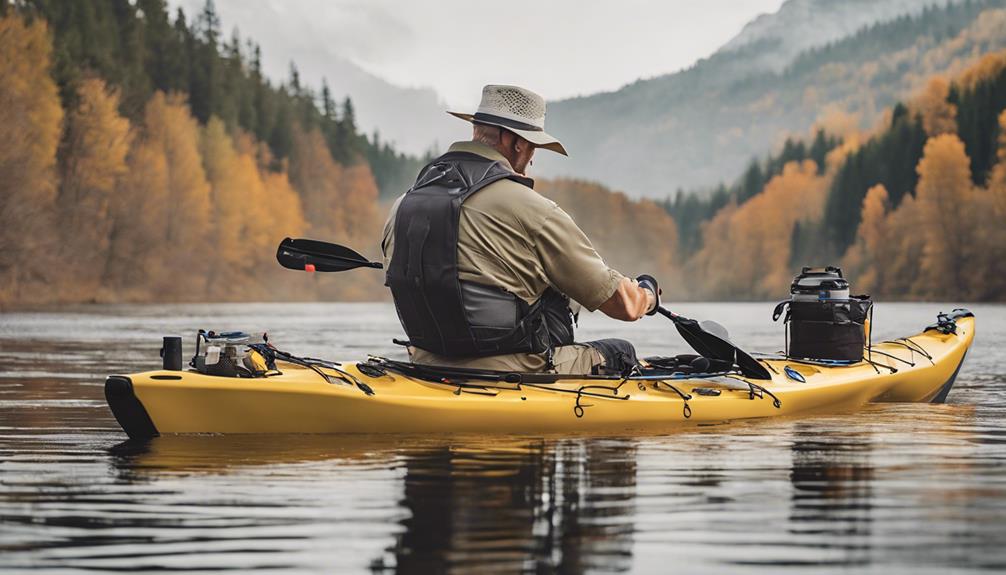
For river trips, efficient storage solutions are essential to keep your gear organized and easily accessible. When embarking on a fishing adventure down the river, having the right storage setup can make a significant difference in your overall experience.
Here are some key considerations for optimizing storage on your fishing kayak:
- Waterproof Containers: Invest in waterproof containers to protect your belongings from getting wet. These containers are perfect for storing items like your phone, wallet, keys, and other essentials that you want to keep dry.
- Deck Rigging: Utilize the deck rigging on your kayak to secure items that you need quick access to, such as a dry bag with snacks or a camera. Deck rigging provides a convenient way to store gear within arm's reach.
- Tackle Crates: Use tackle crates to keep your fishing gear neatly organized. Tackle crates come with different compartments and trays, making it easy to separate and access your lures, hooks, lines, and other fishing essentials.
- Rod Holders: Install rod holders on your kayak to keep your fishing rods secure when not in use. Having designated rod holders frees up space in your kayak and prevents your rods from getting tangled with other gear.
Safety Features for River Angling
Ensure your safety during river angling by equipping your fishing kayak with essential safety features. When venturing into rivers for angling, emergency preparedness is paramount. Always carry a first aid kit, waterproof matches, a whistle, and a multi-tool in case of unforeseen circumstances. These items can be a lifesaver during emergencies such as injuries or unexpected weather changes.
Paddle safety is another crucial aspect to consider. Make sure to have a reliable and sturdy paddle that suits the river's conditions. Additionally, wearing a personal flotation device (PFD) is non-negotiable. Even the most experienced kayakers should wear a PFD at all times when on the water. It can provide the necessary buoyancy in case of capsizing or falling overboard.
Having a kayak with bright and reflective colors can also enhance your visibility, especially in murky river waters. Reflective tape on your paddle can make it easier for others to spot you from a distance. Moreover, consider installing a bilge pump in your kayak to quickly remove any excess water that might accumulate.
Frequently Asked Questions
Can River-Suitable Fishing Kayaks Be Used in Other Bodies of Water, Such as Lakes or Oceans?
River-suitable fishing kayaks can be used in other bodies of water like lakes or oceans. They offer versatility in lakes due to their maneuverability.
In oceans, these kayaks can be adapted for stability. However, it's important to consider the specific features of the kayak and the conditions of the body of water to ensure a safe and enjoyable fishing experience.
Are There Any Specific Regulations or Permits Required for Using a Fishing Kayak on Rivers?
When using a fishing kayak on rivers, it's crucial to be aware of specific regulations and permit requirements. Always check with local authorities for any necessary permits before heading out.
Additionally, follow safety precautions and respect kayak restrictions in the area. Being informed about river regulations will ensure a smooth and enjoyable fishing experience while protecting the environment and adhering to any legal requirements.
What Are Some Recommended Accessories or Gear to Enhance the Fishing Experience While Using a River-Suitable Fishing Kayak?
When fishing from a river-suitable kayak, essential gear like fishing rod holders, paddle holders, tackle storage, and an anchor system can elevate your experience.
Having convenient access to your fishing rod and paddle, organized tackle, and the ability to anchor in strategic spots will make your time on the water more enjoyable and productive.
These accessories can help you focus on fishing and navigating the river with ease.
How Does the Material of the Kayak Affect Its Performance in River Conditions?
When it comes to river conditions, the material of your kayak plays a crucial role in its performance. Different materials offer varying levels of stability and control.
For example, a sturdy material like high-density polyethylene can provide better stability in rough waters compared to other materials.
Understanding how the kayak's material affects its performance in river conditions will help you make an informed choice for your fishing adventures.
Are There Any Specific Techniques or Tips for Fishing From a Kayak in Fast-Moving River Currents?
When fishing from a kayak in fast-moving river currents, safety precautions are crucial. Always wear a life jacket and be mindful of your surroundings.
For casting techniques, try casting upstream and letting your bait or lure drift naturally downstream for a more natural presentation. Keep a firm grip on your rod, and be prepared for sudden movements of the kayak.
Stay alert and enjoy the thrill of fishing in river currents.
Conclusion
When choosing a fishing kayak for river adventures, opt for a river-suitable model. These kayaks offer stability, maneuverability, and durability in river conditions, making your fishing experience safer and more enjoyable.
Consider factors like weight, design features, storage solutions, and safety features to ensure a successful river angling trip.
Make the most of your fishing excursions on the river with a kayak that's specifically suited for these unique environments.
